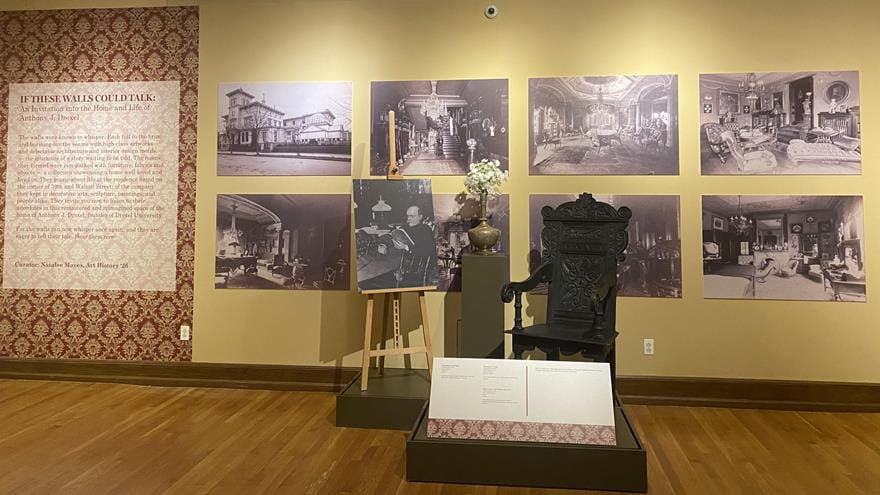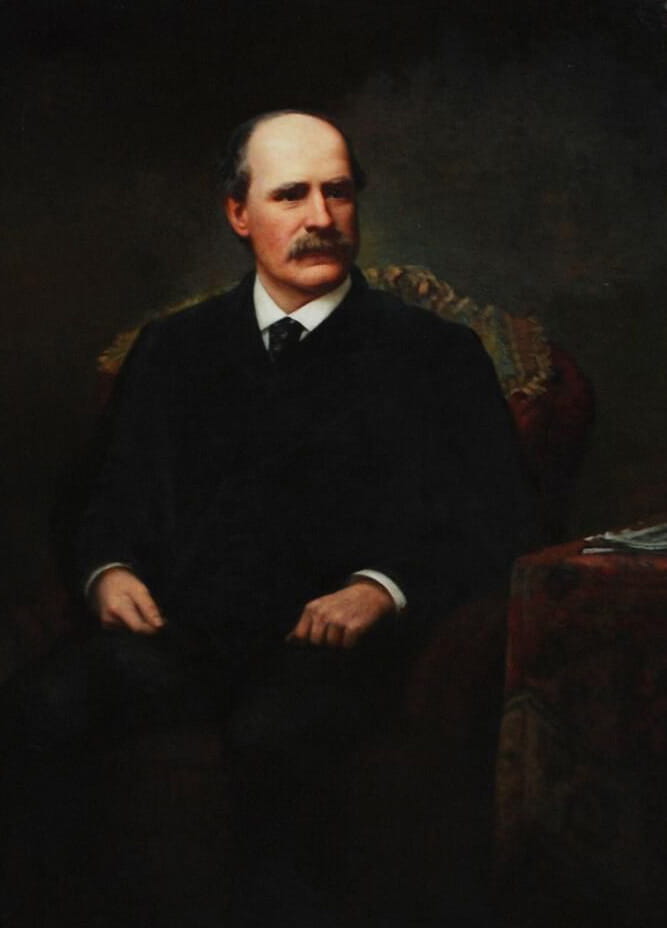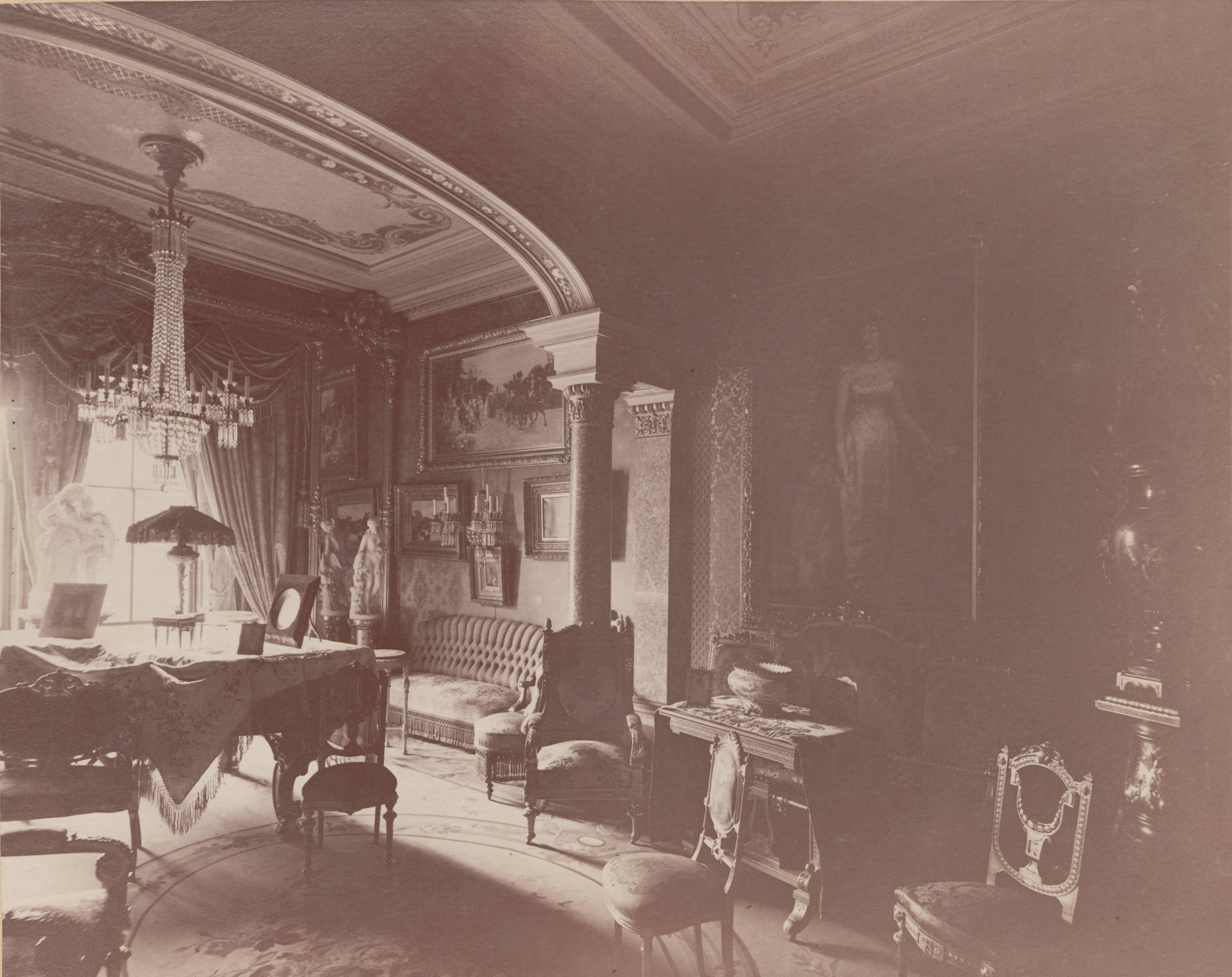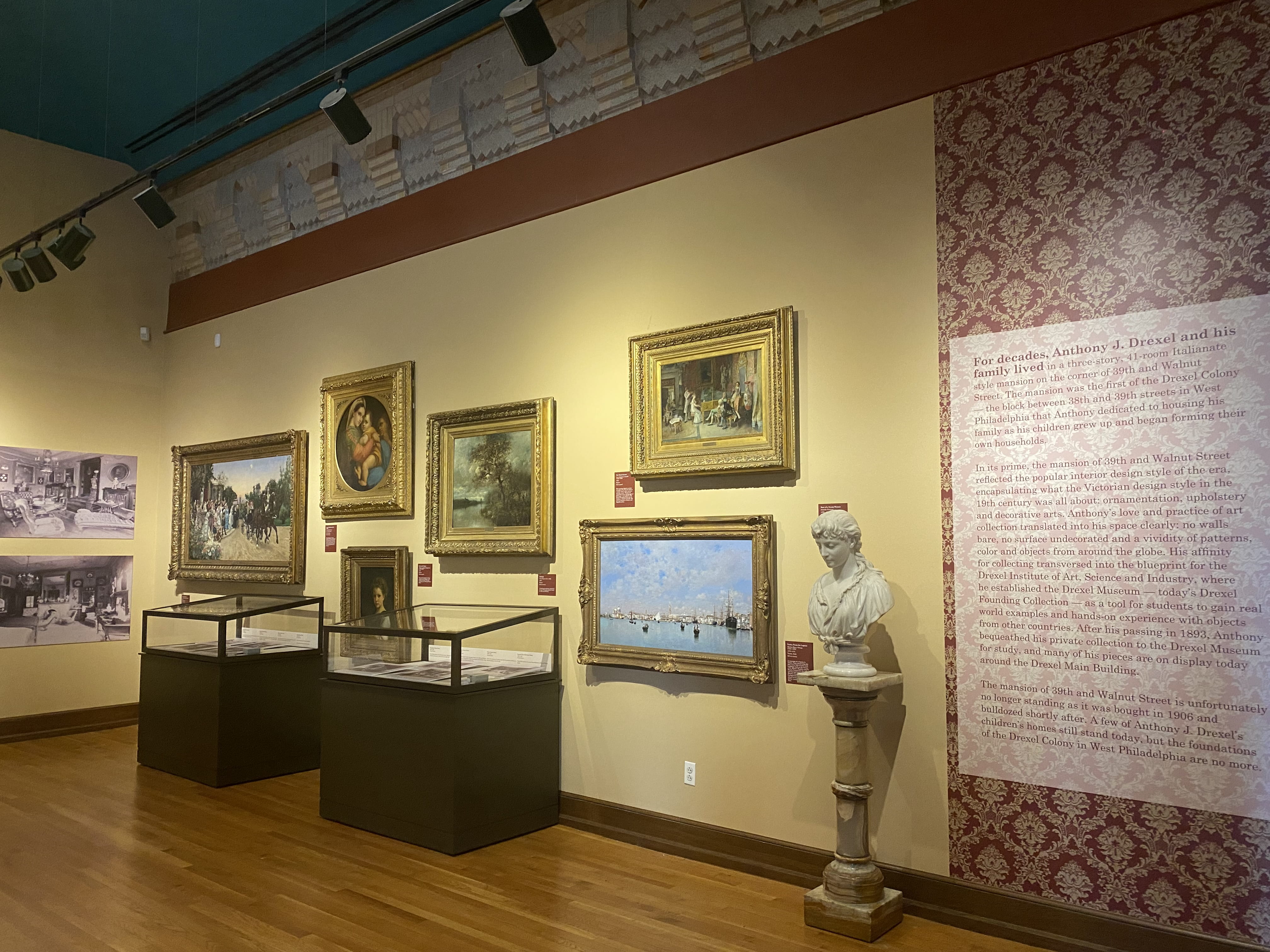New Student-Curated Exhibition Details the Art and Home of Drexel University’s Founder

Anthony J. Drexel (1826–1893) is best remembered today as the founder of Drexel University, but the Gilded Age financier was also a noted art collector and longtime West Philadelphia resident. All of those characteristics and traits are on display in the University’s new student-curated exhibition: If These Walls Could Talk: An Invitation into the Home and Life of Anthony J. Drexel.
The exhibition is free and open to the public at the Paul Peck Alumni Center Gallery (3142 Market St.) now through Sept. 26, 2026. An opening reception will be held this month on Oct. 22, 2025.
Visitors can see what the University’s founder saw inside of his Italianate mansion at 39th and Walnut streets. Anthony and his wife Ellen Rozet Drexel resided there for decades — some of their children later lived in neighboring mansions — until the house was razed after his 1893 death. Natalee Mayes, BA art history '26, curated and designed If These Walls Could Talk using archival photographs showing how the Drexel family home was filled with paintings, sculptures, furniture and other objects that were ultimately bequeathed to the University.
“Once you enter the gallery, it really feels like you've been transported into his home, and that was my main intention when curating this show,” said Mayes, who developed the exhibition while on co-op at the Drexel Founding Collection, the University’s art collection originally started by none other than Anthony himself.

Photograph courtesy of Natalee Mayes.
The son of an Austrian painter-turned-banker, Anthony led his family’s successful Drexel & Co. banking firm and was known for his extensive art collection. Many of those objects joined art and artifacts purchased through his $1 million gift (worth about $35.5 million today) to start the institution’s art collection, which is now known as the Drexel Founding Collection.
For decades, the founder’s art has been displayed inside campus buildings, included in public exhibitions and used as teaching materials for students. A class field trip originally brought Mayes to the Collection in 2022; after visiting during multiple courses to learn about art, artifacts and object handling, she officially joined in 2025 for a co-operative education (co-op) position as a collection’s assistant.
Creating a full-scale exhibition was not originally part of the co-op, but rather the culmination of a professional experience handling “any and all aspects of collection management,” she said. With other duties ranging from aiding class visits to cataloging artifacts to off-campus collection management, Mayes was first tasked with selecting paintings to hang in Drexel’s Paul Peck Alumni Center. A conversation with her former professor Jack Hinton, adjunct faculty member in the Antoinette Westphal College of Media Arts & Design and associate curator at the Philadelphia Museum of Art, then inspired her to recreate Anthony’s living space using his own belongings, which was encouraged by Drexel Founding Collection Director and Executive Director of Collections & Exhibitions Lynn Clouser Waddell.

The 1887 “Portrait of Anthony J. Drexel (1826–1893)” by E. Hart Darragh, which originally hung in a parlor room and had been hanging in the Office of the President at the University before this exhibition. Photograph courtesy the Drexel Founding Collection.
The idea became reality with If These Walls Could Talk, which reflects what Mayes learned on co-op as well as her academic journey at Drexel (she’s now in her fifth and final year). Initially an interior design major, she switched to art history after finding a passion for art history and material culture and studies (and remained part of her college’s Westphal BRIDGE Scholars Program throughout). Outside of classes, she’s held leadership positions on the Drexel University Dance Team for three of the past five years she’s been a student-athlete. Mayes has presented past research findings at two accredited art history symposiums and now hopes to earn a master's degree in library and information science to become an archivist in a library, museum or academic setting.
“I didn't expect curating IfThese Walls Could Talk to tie in my love and knowledge of object handling, interior design and graphic design to create something unique and hopefully a new and interesting experience for those who visit,” she said.
Already, the gallery space has been the site of Drexel’s annual Sept. 13 birthday celebration for the founder. Mayes adjusted the show’s original opening date for the occasion, which has been held in or near Main Building during Welcome Week. As a result, Drexel students, faculty, professional staff and alumni toured the exhibition while eating birthday cake, playing University trivia and meeting other Dragons.

The reception room at Anthony’s house, which shows “After the Wedding” hanging above the other paintings above the couch in the far corner of the room. This is one of the undated photographs from the Drexel family photo album that Mayes researched, and the photograph included in the exhibition. Photo courtesy Drexel University Archives.
Mayes herself didn’t know a lot about the founder before her co-op, and she gained new research skills to investigate the private figure.
In life, Anthony ceded the spotlight to his mentee and business partner John Pierpont “J.P.” Morgan, who led the New York Drexel & Co. office for 23 years, and a famous family friend, Civil War hero and U.S. President Ulysses S. Grant. In death, Anthony left behind very few personal records — but, crucially, Drexel family photo albums were later donated to the University and can be viewed, as Mayes did, through Drexel University Archives.
Undated photographs of Anthony’s house show where art and objects were displayed, and Mayes used them as inspiration when designing the exhibition. She selected both photographs and objects shown in photographs to include in If These Walls Could Talk; for example, one wall includes blown-up versions of those photographs now hung together like the art in Anthony’s house.

“If These Walls Could Talk is a bit different from the typical exhibition, and I struggled between my goal of transporting the visitor into his home while also staying true to what is needed in an accessible exhibit space,” said Mayes. “For example, his home was overflowing with textiles, paintings and decorative arts — but all this would be too busy and overwhelming in a gallery space. It took me a minute to find a happy medium: enough objects so the gallery space feels homey but not too much that it becomes too crowded.”
One of her favorite paintings was what she calls the “ornate and vibrant” 1880 painting “After the Wedding,” by the American-born, Parisian-trained artist Julius LeBlanc Stewart. Anthony commissioned this piece, which supposedly depicts the wedding of his daughter Mae to Julius’ brother Charles. The painting was photographed hanging in Anthony’s reception room, which Mayes said is her favorite room in his house because of “the ornamentation in the architecture paired with the textiles, decorative arts and other paintings.” You can see both the painting and the photograph on display, along with other pieces Mayes chose to highlight and the labels she wrote reflecting her research and expertise.
“The most rewarding moment of this whole process was seeing everything come together smoothly and fit perfectly in the gallery space,” she said. “I've never been able to see my design ideas come to life on such a large scale. All throughout the installation process, I couldn't stop smiling.”
Drexel News is produced by
University Marketing and Communications.

